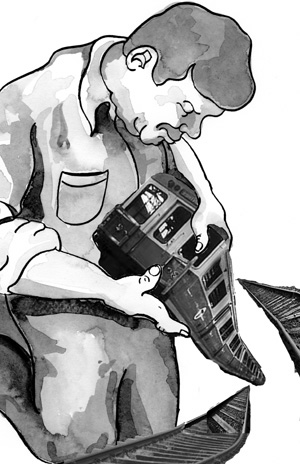Tinkering with the trains
The MBTA broadcasts information to T platforms about the proximity of approaching trains.
It tells people at Porter Square, for instance, that a southbound train has left Alewife, or that a northbound train has left Kendall.
What’s difficult to appreciate about this is that the MBTA doesn’t otherwise deal with “north” or “south.” Train platforms are labeled “inbound” (meaning toward Boston) and “outbound” (away from Boston), and when you arrive in Boston, tracks are merely labeled with the farthest T stops as destinations. For instance, at Park Street, you can get on the red line “To Alewife via Harvard” or “To Ashmont, Braintree via Downtown Crossing.”
This “northbound, southbound” stuff isn’t particularly upsetting, and it shouldn’t confuse experienced riders for long. It doesn’t help much, either, if only because from Porter, a northbound train goes west and a southbound train east before heading in a general southerly direction. Or rather, south to Harvard, east to Central, northeast to Kendall … but, yes, it goes to the south shore. Ultimately.
What’s striking about the announcements is their uselessness, their silliness, their obscuring overlay of a system on entirely different systems that stretch hundreds of miles and back more than 100 years. Newcomers will look to a sign that says “inbound” or “Ashmont/Braintree” and hear an announcement that says “southbound.” They will hear an announcement about a “northbound train” and look in vain for a sign that confirms this, or conforms to it.
Instead of warning riders that the doors are opening to their left or right, announcements might as well say doors are opening to the west or east.
“Public address personnel are not held to any one standard when making announcements,” said Lydia Rivera, an MBTA representative, noting that “the terms inbound and outbound may be interpreted differently by customers depending on their location in the system.”
So the MBTA has moved on from decades-old standards because they’ve finally decided they’re confusing — but without actually eliminating what’s confusing.
Sure, the T is confusing. But it’s confusing enough on its own. The compass can be left out of it.

